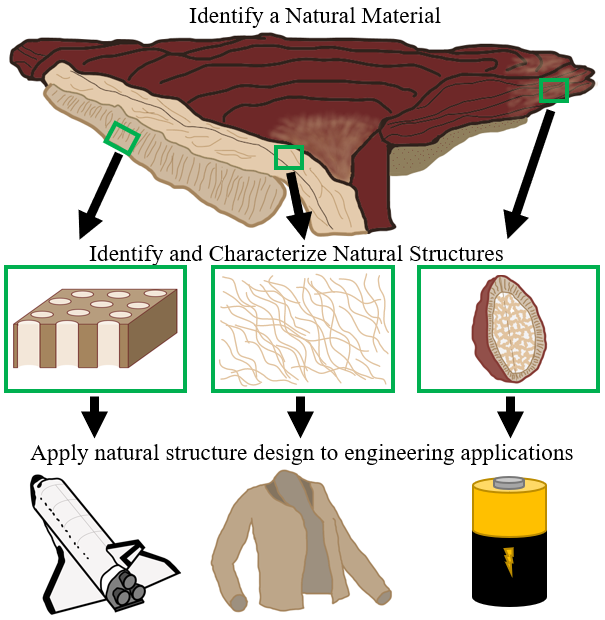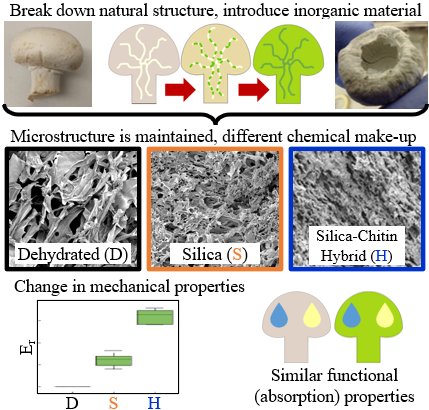Creating Bioinspired Designs

The overall goal of research in this lab is to provide a basis from which bioinspired designs, materials, and products can be made. By learning from the materials made from the natural design process of evolution, we can make better engineering or consumer products. By characterizing natural materials, and understanding their inherent material or mechanical advantages, we can then identify engineering applications that may be benefited by implementing similar structures and properties.
Characterization of Natural Materials: Fungi

Fugal structures, such as those made by filamentous fungi (such taxa in the Agaricomycetes class that form mushrooms (sporocarps). The microstrucutre and constitutive filaments that create the larger, more complicated structures differ between genera and species. This can include sporocarps that are tough and woody (i.e., Ganoderma species such as Reishi mushrooms) to soft and leathery (Agaricus species, such as white mushrooms). The diverse array of properties of these fungal structures can be characterized using methods such as imaging, mechanical testing, elemental analysis, and modeling. Project in characterizing fungal structures are expected to lead to a better understanding of different mushrooms and how they are able to flourish despite worsening environmental conditions as well as providing a fundamental understanding of the constitutive parts that make up these structures, and how they can be better modeled and incorporated into mushroom-based products.
Creating Bioinspired Materials Using Advanced Manufacturing: Biotemplating

Many biological materials have been studied for the enhanced properties that they can achieve due to their hierarchical, multiscale structures. Much research has been done to try and copy or mimic these structures to create advanced materials, though there are often limitations in the scale and ability to create structures with hierarchical design that go from the macroscale, to the microscale, and even to the nanoscale. Typical manufacturing methods do not offer the control needed to created a multiscale design down to the microscale and beyond. Biotemplating is an advanced manufacturing method that uses a natural structure as a template from which to create an inorganic copy of the natural structure. This method has proven to be able to create structure that copy natural structures from the macroscale, down to the microscale and beyond. What makes biotemplating an powerful advanced manufacturing tools is that rather than trying to recreate hierarchical structures, this method can almost exactly recreate them in a different material. This branch or research seeks to investigate biotemplating methods and the properties of biotemplated materials.